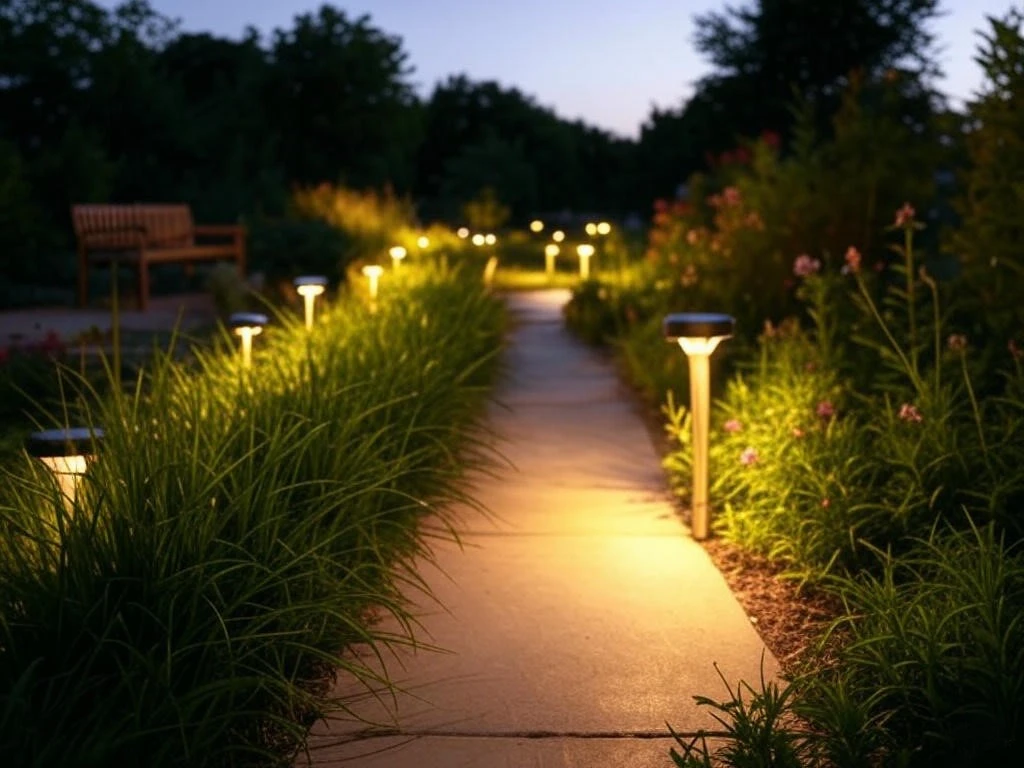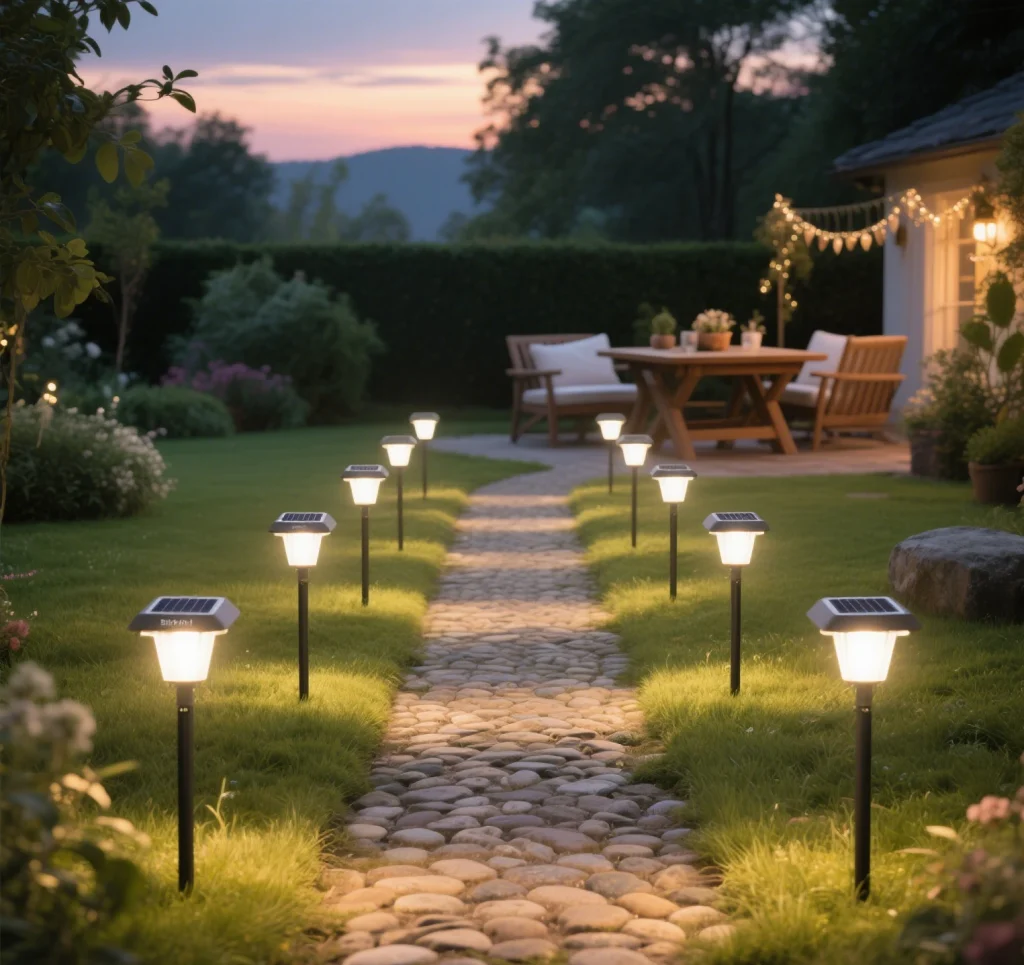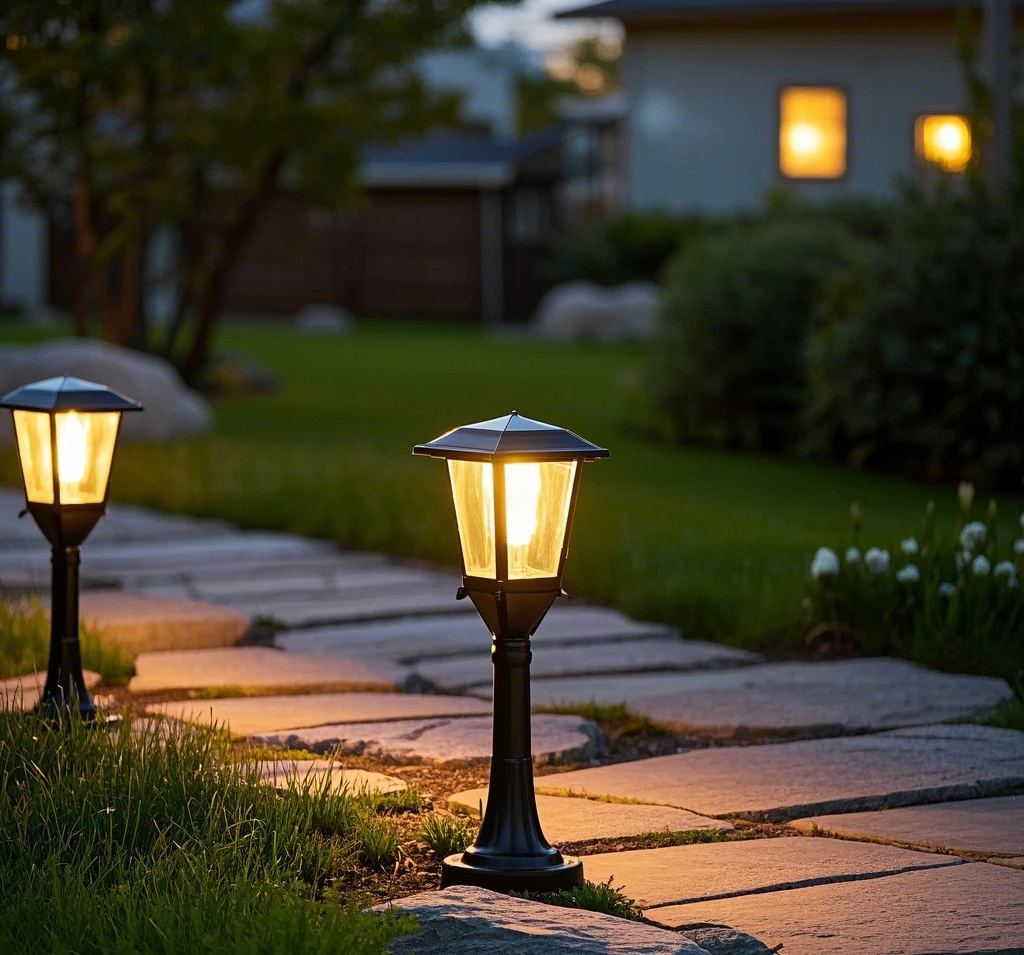elated environmental disruption. Their compact size and solar-powered operation make them perfect for zero-waste lifestyles, as they minimize energy consumption and maintenance. By choosing lights with eco-friendly features, residents can contribute to their community’s sustainability goals while enhancing their yards’ aesthetic appeal.

Aligning with Zero-Waste Principles
The zero-waste movement, embraced by over 20% of U.S. communities according to recent environmental surveys, emphasizes reducing landfill contributions through reusable, recyclable, and durable products. Small solar lights fit this model by offering long-lasting, low-impact solutions that avoid the waste associated with traditional lighting. By focusing on full lifecycle sustainability, these lights ensure that every stage—from production to disposal—minimizes environmental harm.
Solar Lights with 100% Recyclable Materials
Choosing solar lights made from 100% recyclable materials is a key step toward sustainable outdoor design. These materials ensure that, at the end of their lifecycle, the lights can be fully repurposed, preventing landfill waste.
Selecting Eco-Friendly Materials
Opt for garden solar lights made from recycled plastics or aluminum, which can be reprocessed into new products. For string lights, prioritize biodegradable silicone or hemp-based casings, which decompose naturally if not recycled. These materials align with zero-waste goals by ensuring no harmful residues remain after disposal. For example, a garden stake light made from 100% recycled plastic reduces the demand for virgin materials, while its durability ensures years of use before recycling is needed.
Practical Choices for Homeowners
When selecting 100% recyclable solar lights, look for certifications like Cradle to Cradle or EPA’s Sustainable Materials Management standards. These labels confirm that the light’s components—such as the casing, solar panel, and battery—can be fully recycled at local facilities. Place garden lights along pathways or flowerbeds to highlight eco-friendly landscaping, ensuring they blend seamlessly with your yard’s natural elements.
Modular Design: Reducing Waste Through Repairability
Modular design is a game-changer for eco-conscious homeowners, allowing individual components of solar lights to be replaced rather than discarding the entire unit. This approach supports zero-waste principles by extending the product’s lifespan and minimizing unnecessary waste.
Benefits of Modular Solar Lights
Choose solar lights with replaceable parts, such as detachable LED bulbs, solar panels, or batteries. For instance, a modular garden light with a swappable lithium-ion battery allows you to replace only the worn-out component, avoiding the need to discard the entire light. This design reduces waste by up to 70%, according to C2C studies, as it prevents functional parts from ending up in landfills. Modular lights also save money, as replacements are often cheaper than buying new units.
Implementation Tips
Install modular solar lights in high-use areas like patios or entryways, where durability and longevity are critical. Ensure spare parts are readily available from the manufacturer to simplify maintenance. For example, a modular fence light with a replaceable LED module can be easily updated to maintain brightness, keeping your yard both sustainable and visually appealing. Check for brands that offer clear instructions or recycling programs for old components to streamline the process.
Community-Shared Charging for Low-Power Solar Lights
For low-power lights like string solar lights, community-shared charging stations offer an innovative way to reduce resource consumption. By centralizing charging infrastructure, these stations prevent each household from purchasing redundant equipment, aligning with zero-waste community goals.
How Shared Charging Works
A community-shared charging station consists of a centralized solar panel hub that powers multiple low-wattage lights, such as string or small garden lights. Residents can connect their lights to the hub during the day, ensuring efficient energy use without individual solar panels for every household. This approach reduces material use by up to 30%, as fewer panels and batteries are needed overall. Communities like those in Portland, OR, have adopted shared charging to support zero-waste initiatives, with hubs placed in communal areas like parks or shared gardens.

Setting Up a Shared System
To implement community-shared charging, collaborate with neighbors to install a solar charging hub in a sunny, accessible location. Choose string lights with low power requirements (e.g., 1-2 watts per bulb) to maximize efficiency. Ensure the hub has a battery storage system to provide consistent charging, even on cloudy days. This setup not only reduces waste but also fosters community engagement, as residents work together to maintain the system.
Additional Considerations for Eco-Friendly Lighting
To fully embrace full lifecycle sustainability, consider these factors when selecting and installing small solar lights:
Durability for Long-Term Use
Choose solar lights with high durability ratings, such as IP66 for water and dust resistance, to ensure they withstand harsh weather. Durable lights reduce the frequency of replacements, aligning with zero-waste principles. Look for LEDs with lifespans of 25,000 hours or more and batteries that last 3-5 years.
Energy Efficiency
Opt for lights with high-efficiency solar panels (e.g., monocrystalline panels with 20%+ efficiency) to maximize energy capture. Automatic dusk-to-dawn sensors further reduce energy waste by ensuring lights only operate when needed, supporting eco-conscious living.
Aesthetic Integration
Eco-friendly doesn’t mean sacrificing style. Select solar lights with sleek, minimalist designs or natural finishes (e.g., woodgrain or matte black) to complement sustainable landscaping like native plants or xeriscaping. This enhances your yard’s appeal while showcasing your commitment to zero-waste values.
Cradle to Cradle Certified Solar Light Brands
To help you choose sustainable solar lights, here’s a curated list of brands that meet Cradle to Cradle (C2C) certification standards, ensuring full lifecycle sustainability through recyclable materials, modular designs, and eco-friendly production:
- BioLite
- Why It’s Certified: Uses 100% recyclable aluminum and plastic in its garden and string lights, with modular LED and battery components.
- Best For: Pathway and patio lighting with replaceable parts.
- Solight Design
- Why It’s Certified: Features biodegradable silicone string lights and recycled plastic lanterns, designed for easy disassembly and recycling.
- Best For: Decorative string lights for community events.
- SunKing
- Why It’s Certified: Offers modular fence and garden lights with recyclable casings and long-life batteries, supported by a take-back program.
- Best For: Durable, high-efficiency fence lighting.
- D.light
- Why It’s Certified: Produces 100% recyclable stake lights with replaceable solar panels, adhering to C2C material health standards.
- Best For: Budget-friendly garden lighting.
- Barefoot Power
- Why It’s Certified: Specializes in modular string and garden lights with recyclable components, designed for community-shared charging systems.
- Best For: Collaborative community setups.
Verify C2C certification on brand websites or through the Cradle to Cradle Products Innovation Institute to ensure compliance with zero-waste standards.
Conclusion: Lighting the Way to a Sustainable Future
Small solar lights are a powerful tool for eco-conscious homeowners in zero-waste communities, offering sustainable, stylish illumination that aligns with environmental values. By choosing lights with 100% recyclable materials, modular designs, and community-shared charging options, you can reduce waste, lower resource consumption, and create a stunning yard that reflects your commitment to full lifecycle sustainability. With the right brands and thoughtful implementation, your solar lights will not only enhance your outdoor space but also inspire your community to embrace greener living. Let your yard shine as a beacon of sustainability, proving that eco-friendly design can be both beautiful and impactful.

Comments